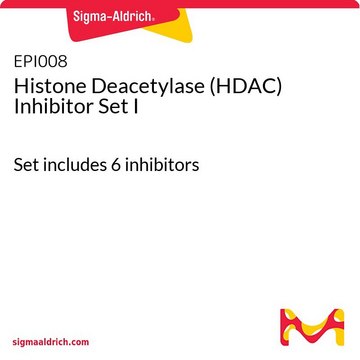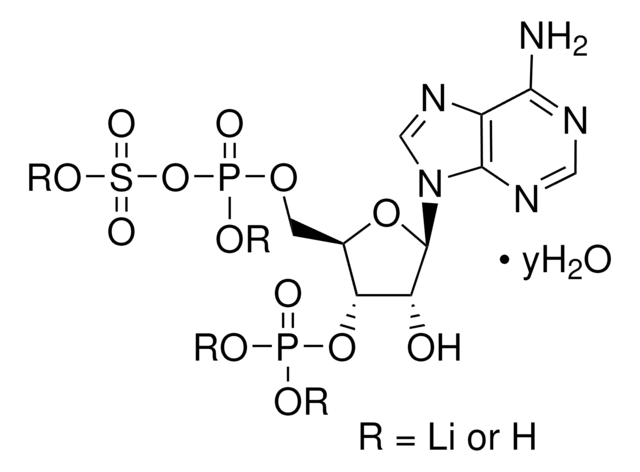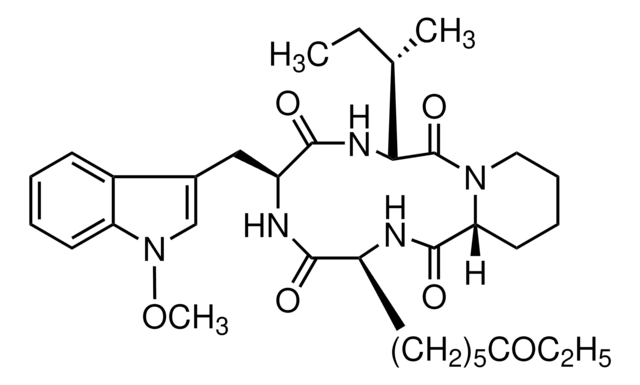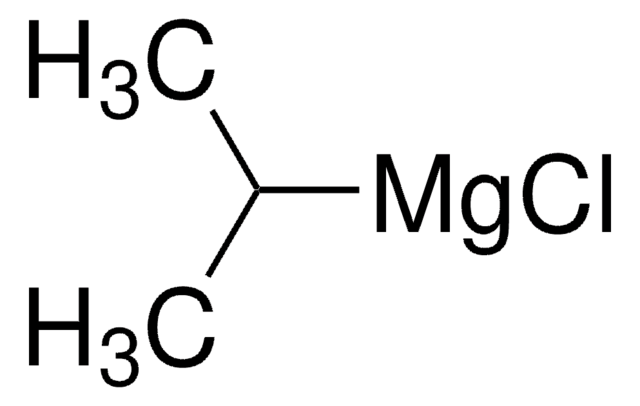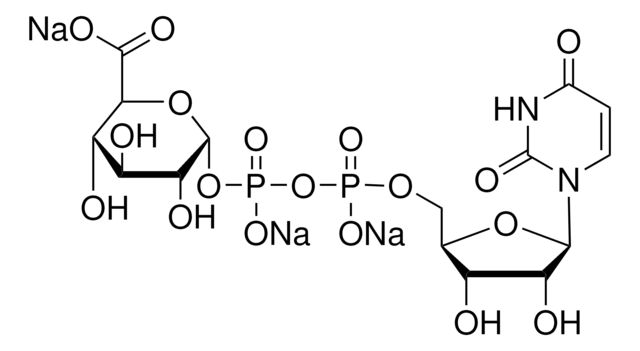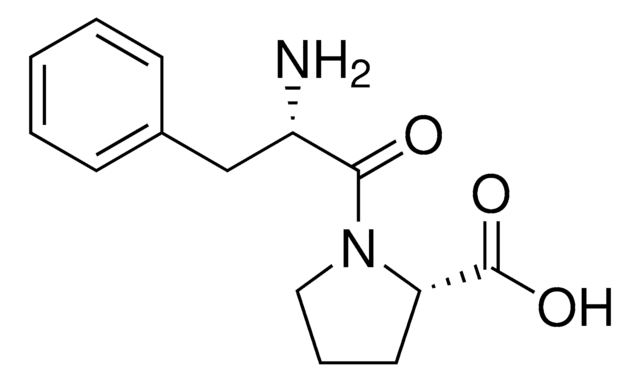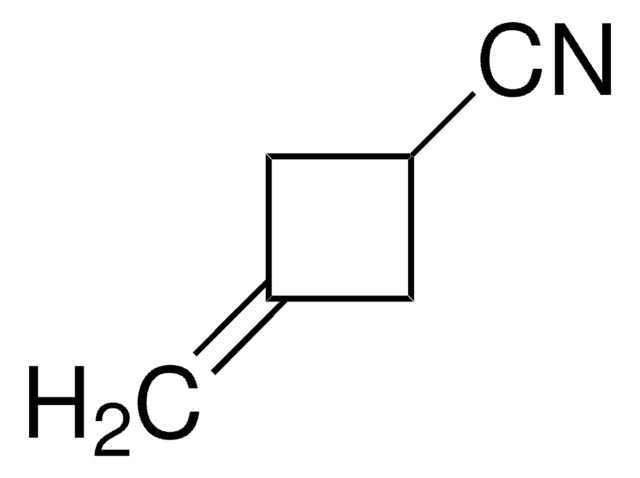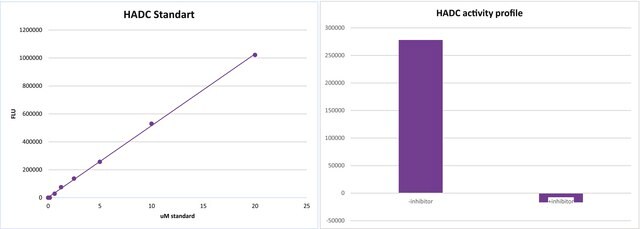T2580
Trapoxin A
≥98% (HPLC), from Helicoma ambiens
Sinonimo/i:
Cyclo((S)-phenylalanyl-(S)-phenylalanyl-(R)-pipecolinyl-(2S,9S)-2-amino-8-oxo-9,10-epoxydecanoyl), RF 1023A
About This Item
Prodotti consigliati
Origine biologica
Helicoma ambiens
Livello qualitativo
Saggio
≥98% (HPLC)
Forma fisica
solid
Solubilità
DMSO: soluble 0.9-1.10 mg/ml, clear, colorless to faintly yellow (may be further diluted 20 fold in H2O)
chloroform: soluble
methanol: soluble
Condizioni di spedizione
dry ice
Temperatura di conservazione
−20°C
InChI
1S/C34H42N4O6/c39-29(30-22-44-30)18-9-3-8-16-25-31(40)36-26(20-23-12-4-1-5-13-23)32(41)37-27(21-24-14-6-2-7-15-24)34(43)38-19-11-10-17-28(38)33(42)35-25/h1-2,4-7,12-15,25-28,30H,3,8-11,16-22H2,(H,35,42)(H,36,40)(H,37,41)/t25-,26-,27-,28+,30-/m0/s1
GXVXXETYXSPSOA-UFEOFEBPSA-N
Applicazioni
- to study its effects on the inhibition of histone deacetylase 11 (HDAC11)
- to study its effects on the inhibition of HDAC3 in human cell lines
- to study its effects on the inhibition of HDAC6 in rat pyramidal neurons
Azioni biochim/fisiol
Caratteristiche e vantaggi
Nota sulla preparazione
Prodotti correlati
Avvertenze
Danger
Indicazioni di pericolo
Consigli di prudenza
Classi di pericolo
Acute Tox. 3 Oral
Codice della classe di stoccaggio
6.1C - Combustible acute toxic Cat.3 / toxic compounds or compounds which causing chronic effects
Classe di pericolosità dell'acqua (WGK)
WGK 3
Punto d’infiammabilità (°F)
Not applicable
Punto d’infiammabilità (°C)
Not applicable
Certificati d'analisi (COA)
Cerca il Certificati d'analisi (COA) digitando il numero di lotto/batch corrispondente. I numeri di lotto o di batch sono stampati sull'etichetta dei prodotti dopo la parola ‘Lotto’ o ‘Batch’.
Possiedi già questo prodotto?
I documenti relativi ai prodotti acquistati recentemente sono disponibili nell’Archivio dei documenti.
Articoli
Epigenetic modifications are thought to occur through two key interconnected processes—DNA methylation and the covalent modification of histones.
Il team dei nostri ricercatori vanta grande esperienza in tutte le aree della ricerca quali Life Science, scienza dei materiali, sintesi chimica, cromatografia, discipline analitiche, ecc..
Contatta l'Assistenza Tecnica.